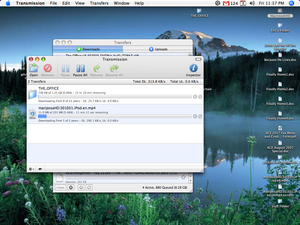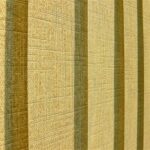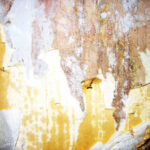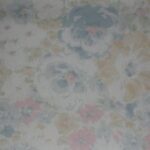I do a lot of software reviews. A lot of them. And with most applications, I like to give the reader of my review an idea of what exactly the application looks like. There’s no real point in me telling you that a certain program has a very nice look and feel, and then not show it to you!
But the problem with taking a lot of screen shots is that my computer’s desktop is usually a bit of a mess. There are folders, icons, other open programs… not to mention the fact that my wallpaper is often kind of busy. That’s not what I want to take my screen shot against. I’d rather take my screen shot against a very basic backdrop (no mountains, rivers, bunches of balloons, or anything a bit distracting), or even just a solid color.
Of course, that’s not a huge deal. On a Mac all you need to do to change the desktop wallpaper is right click and select “Choose Desktop Background” and you’re whisked away to the correct preference panel. And it’s not hard to minimize all my open applications (aside from the one I want to take a screen shot of, of course), or hide them. What’s a problem is all those folders, hard drives, mounted devices and icons that are scattered all over my desktop.
What to do about them?
I use a handy little application called Desktop Curtain. Written by Peter Maurer, the same gentleman responsible for Butler and yFlicks, Desktop Curtain does only one thing: It temporarily replaces your normal wallpaper with a bland one, and optionally hides everything but open application windows.
In this way, it’s possible to get that great screen shot, without having to go through the hassle and chore of moving all my files, folders and icons to a different part of my hard drive, or else trying to bunch them all together so that they’ll be hidden behind the window I’m getting a screen shot of.
To use Desktop Curtain, simply double click its icon. Upon first launch, in addition to your wallpaper reverting to the default blue Apple-provided wallpaper and your icons and everything else on the desktop disappearing, you are taken to Desktop Curtain’s preferences. Here you are informed of the steps necessary to quit Desktop Curtain (since you won’t want it on forever, right), and are given the option to choose Desktop Curtain’s behavior.
You can select any wallpaper you like, or simply go with a solid color. In addition, you can decide whether or not Desktop Curtain should hide all the desktop items, which basically puts the “new” desktop picture between you and the desktop, or simply chance the potentially “busy” desktop picture with one a little more sedate. You can also modify Desktop Curtain so that it quits by double clicking the application icon a second time. By default, Desktop Curtain can be quit by right clicking anywhere on the new wallpaper, and selecting “Quit” from the menu that appears.
I can’t tell you how often I use Desktop Curtain. I only discovered it recently (within the last few weeks), but I have to say that it’s completely changed my way of writing software reviews. Previously I would only take screen shots when I had a bunch to do. I was one of those people who shuffled icons and folders around, trying to hide them behind windows so they couldn’t be seen (or using Photoshop to get rid of them later). But with Desktop Curtain, that’s a thing of the past. Now I just start it up, take my screen shots, and quit, and my desktop is back the way I like it.
Desktop Curtain is a free program, but the author says donations are always accepted. To download Desktop Curtain, find out more about it, or make a donation, please visit the program’s website here.






